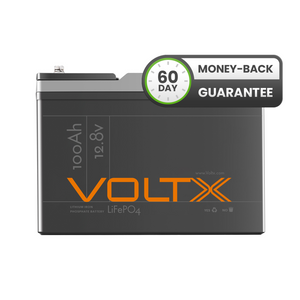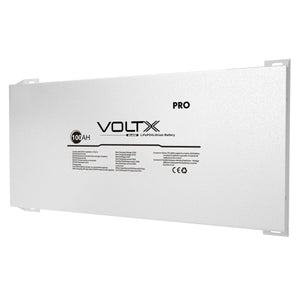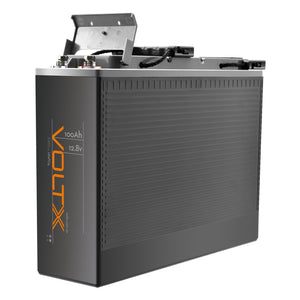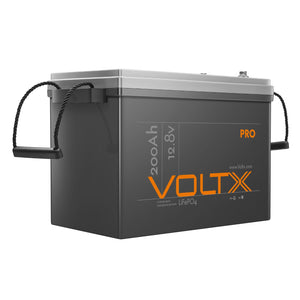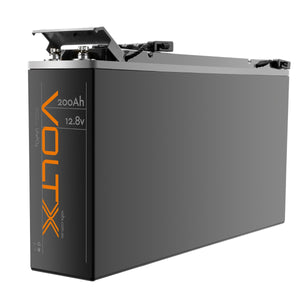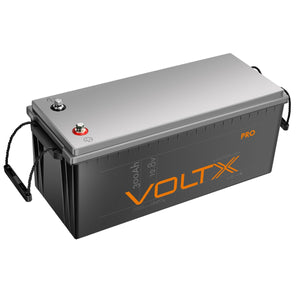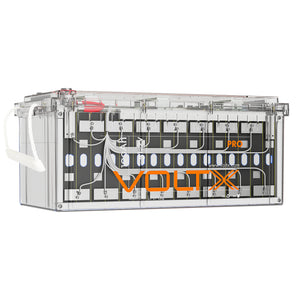As reliable as they are, deep-cycle batteries can also experience a decline and can even be completely damaged if not cared for or maintained properly. Aside from not being able to maximise your battery bank's full potential, this will be even more of a hassle in case you're in the middle of an off-grid camping or you're using it as a battery backup.
Whether you're using an AGM deep-cycle battery, lithium deep-cycle battery, or even a marine deep-cycle battery, it's always an advantage to be aware of telltale signs that something is wrong with it. Here are a few initial indications that your deep-cycle battery has gone bad.
Altered external structure: This includes your battery's physical attributes, so make sure you inspect your unit from time to time. For instance, a broken or loose terminal can lead to a short circuit. Another thing, if you notice a bulge in your battery, this might be a result of overcharging so it's best to avoid using it since it has a tendency to explode. This is the same case with cracks, splits, and holes. For wet-cell flooded batteries, once you notice the water rapidly drying out, it's a clear sign of sulfation which is the number one cause of battery failure. Lastly, any excessive leakage and discolouration of liquid and cells is a warning that you need to replace your battery already.
Faulty voltage readings: Doing a voltage reading of your battery is also a good way of determining its current state. For reference, you can use a voltage chart while you do this. The important point to remember would be if your voltage level read 0, it could mean that your battery experienced a short circuit. If it cannot read over 10.5 volts during charging, then your battery has a dead cell. Think you have completely topped up your battery but the voltage remains at 12.4V or less? This indicates that your battery is sulfated. Sulfation is a natural occurrence every time a battery discharges but if you keep your deep-cycle battery sitting unused for long, it hardens and affects your battery's ability to produce power.
Unsuccessful load test attempts: While load testing your battery can be done in an automotive shop, you also have the option to do it yourself. Make sure your battery is fully charged and left to sit out for 12 hours before proceeding to release the residual charge and yield more accurate results on how it will perform under normal circumstances. Let's use a 12v deep-cycle battery as an example. Once you start the test and it holds under load for a few seconds but the voltage eventually begins to drop or it instantly falls to 0, this is a sign that something is wrong with your battery. It's referred to as an "open-cell" which may be a cause of either manufacturing flaws, sulfation, or extreme temperatures.
At What Voltage Is a Deep-Cycle Battery Dead?
Typically, the lowest limit for batteries is 10.5V. If your battery reaches this level, it can be considered unsuitable in practical use already. When using a deep-cycle caravan battery or camping battery, campers usually use no more than 20% to 50% of their battery's available energy before recharging. They know that if they let the battery voltage drop to 12.1V, they have deep-discharged their battery bank which will cause a decline in its cycle.
How Do You Maintain a Deep-Cycle Battery?
Deep-cycle batteries come in different sizes and structures. There are 100Ah deep-cycle batteries, slimline deep-cycle batteries, and more. Nevertheless, proper care and maintenance are needed regardless of their type to maximise their function. Below are some of the ways you can keep your deep-cycle battery pack in its best state for long-lasting use.
-
Always keep your battery fully charged (above 12.5V). Use a voltmeter to easily keep track of your voltage level and make sure you top it up every after trip.
-
Check on the battery and connections once in a while. Make sure it's free of dirt and grime. If you have a battery with removable caps on top, always see if it has enough electrolyte water to cover the battery plates. Examine the entire battery bank for signs of physical damage, inspect the terminals, screws, clamps, and check if there are loose connections.
-
Choose the appropriate battery charger and follow the proper charging procedures. A deep-cycle battery should be recharged with the correct multi-stage battery charger. Your charger's voltage should also match that of the battery's and the manufacturer's instructions on charging should always be followed to avoid damaging the battery and endangering yourself too.
More from Outbax:
Now that you've got the basics of testing a deep-cycle battery, you're all set to buy your own for your next camping adventure. Here at Outbax, we offer reliable, super-cheap deep-cycle batteries that will effectively power any RV or campsite. We have something for every outdoor lover here-deep-cycle batteries in Brisbane, deep-cycle batteries in Adelaide, and even other power equipment like inverter generators and solar panels.
